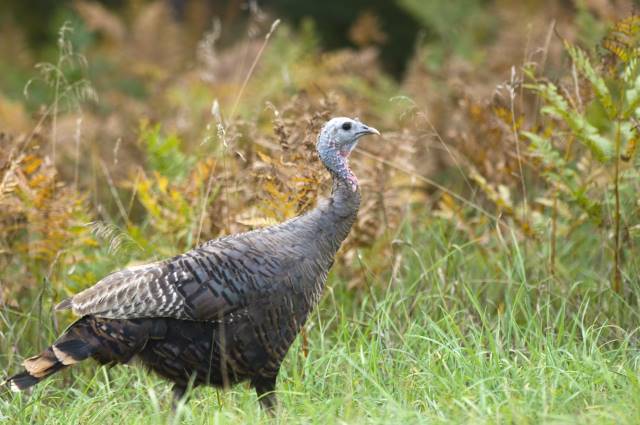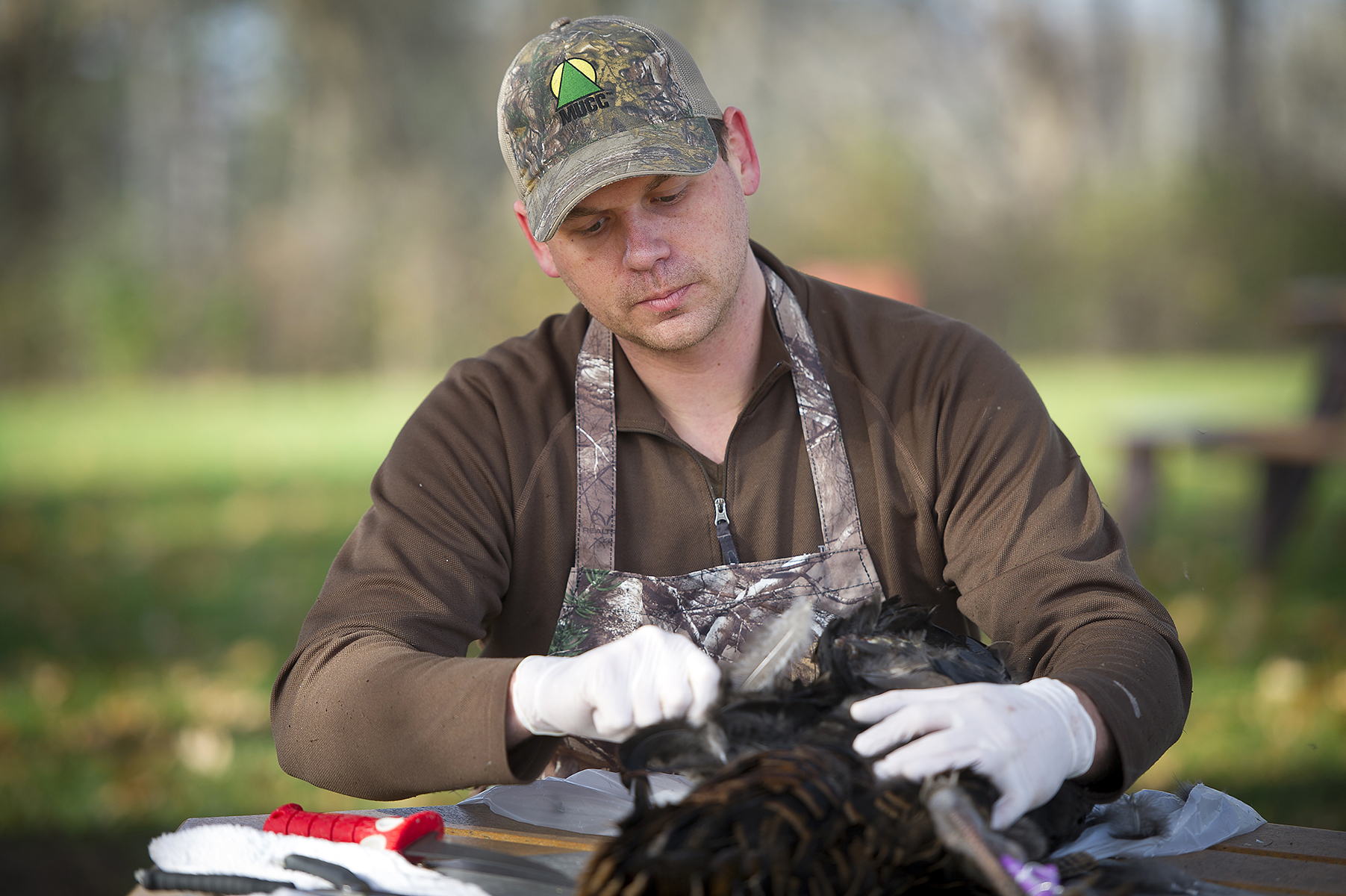Thanksgiving and wild game go together
Reports of the first Thanksgiving dinner indicate that the Pilgrims and indigenous peoples certainly feasted on venison and wild fowl, but whether that fowl was wild turkey is a matter of conjecture.
 Though wild turkeys were known to exist in the area and have been mentioned as hunters’ quarry in other accounts of early American life, it is just as likely the fowl at that celebratory feast were ducks, geese, swans and/or the now extinct passenger pigeons. Though wild turkeys were known to exist in the area and have been mentioned as hunters’ quarry in other accounts of early American life, it is just as likely the fowl at that celebratory feast were ducks, geese, swans and/or the now extinct passenger pigeons.
In any case, wild game was certainly at the center of the first Thanksgiving.
Though domesticated turkey has assumed the role of main course in the intervening years, wild game – often venison – is on the menu at many homes during Thanksgiving – and why not? Thanksgiving occurs during deer hunting season.
Wild game offers challenges for cooks. For the most part, it has less fat than domesticated meat and the fat is located differently in the body. Cooks must refine their techniques to get the most out of wild game.
That’s the view of Dan Nelson, a restaurant chef, who also serves as the main man in the kitchen at Gourmet Gone Wild events in Michigan.
Gourmet Gone Wild is an outreach program sponsored by several entities, including the Michigan Department of Natural Resources. The program highlights to young professionals and families, in urban to suburban environments, the health benefits of eating wild game, while also emphasizing its connection to environmental stewardship, sustainability and conservation.
Nelson, a 35-year-old lifelong sportsman/cook, says overcooking is the biggest mistake most beginners make when tackling game. Check out a video of Chef Nelson.
“Wild game is not as fatty as domesticated meat and most of the fat that’s stored in wild game is in quick-access areas,” said Nelson, who puts on a dozen Gourmet Gone Wild events each year. “The intermuscular fat we see in beef and pork is fat that is long-term storage. Quick-access fat is just below the skin and the centerline – close to the backbone and within the gut. Those are all fats that game animals can turn to on a daily basis as a constant energy source. areas,” said Nelson, who puts on a dozen Gourmet Gone Wild events each year. “The intermuscular fat we see in beef and pork is fat that is long-term storage. Quick-access fat is just below the skin and the centerline – close to the backbone and within the gut. Those are all fats that game animals can turn to on a daily basis as a constant energy source.
“In processing, you remove most of that fat from the game itself. That means you either have to put fat back into it or cook it in ways that accommodate that lack of fat.”
Nelson said he prefers to accommodate and that means serving most wild game rare.
“Every degree of temperature you add to the muscle causes muscle fibers to constrict,” Nelson said. “When a steak hits the grill you see the steak constrict – the muscle fibers pull in reaction to the heat. That’s why a hamburger gets smaller when you cook it.
“All that constriction drives fluid out of the meat. That’s why I have a very accurate meat thermometer. I don’t like to go a degree past where I need to go. If I’m looking to cook something rare or mid-rare, I know the exact temperature I want to go to.”
Although rare is the option for dark meats, wild turkey – which has both white and dark meat – offers a different complexity.
“Wild turkey is something that should be cooked more well-done because of the possible pathogens that are found in poultry,” Nelson said. “That only changes the temperature, but it doesn’t change the fact that you don’t want to go over the temperature you’re aiming for.”
 What is that temperature? What is that temperature?
For white meat, shoot for 165 degrees, for dark meat, 180 degrees, Nelson said. You want to cook the dark meat (i.e., the drumsticks) longer because the meat is tougher.
“Wild turkey is extremely difficult to roast,” Nelson said. “To make use of the skin, you have to pluck it very thoroughly and clean it very thoroughly. And with toms, that readily accessible fat is in the sponge and it’s not delicious at all.
“Wild turkey lends itself to being cooked in pieces. You can cook the legs and the wings/breast separately. And I would cook the breast separate from everything else – it’s helpful to have them in the same pan so you have the juices to make gravy, but have them cut up in such a way as you can remove pieces as they reach ideal temperature. You want to bake it in a way in which you’re starting the dark meat first. Don’t overcook it.”
Another key to wild turkey is to slice it thin, across the grain, Nelson said.
“Wild turkey breast is extremely low in fat and has extremely long grain to it. There’s just no fat to keep your mouth moist while chewing,” Nelson said. “Eliminating the length of chew is the most crucial part of having delicious wild turkey breast.”
Cooks preparing waterfowl should either cook in a manner that preserves moisture or add fat.
“There’s no better fat than goose or dabbling ducks,” Nelson said. “That’s liquid gold. Way too many hunters are breasting their birds and not taking advantage of the rest of it.
“Besides a lot of valuable meat on the carcass, there’s a lot of extremely valuable fat on the carcass. Either marinate with it or add it to stock. And if you’re sauteing, that would be the fat you would use in the pan.” with it or add it to stock. And if you’re sauteing, that would be the fat you would use in the pan.”
Any game should “rest” after it’s out of the oven before it’s served, Nelson said.
“Every piece of meat you cook you should rest for about as long as it took you to cook it,” Nelson said. “If there is still built up heat and you didn’t let it rest, that tension that is in there is going to squeeze all the moisture out. Make a little tin foil hut and let it sit there – the top of the oven is going to be warm because you’ve had your oven on.”
That’s especially true for venison, Nelson said.
“If you’re eating something that has venison fat in it, it coagulates as soon as you put it in your mouth,” he said. “It’s not that it tastes terrible, it’s just that it coats your mouth. After it’s sliced, hit it with some heat to raise the temperature of the fat. Take a platter of meat, pop it in a high-temperature oven for a couple of minutes to warm the fat up, and warm the serving platter up to hold the heat.
“And serve a good red wine with it,” he said. “That’ll cut the fat out of your mouth right away, too. The bolder, the more tannic your red wines, the better they are at cutting the fat.”
Learn more about Gourmet Gone Wild.
Catch upcoming stories by subscribing to free, weekly “Showcasing the DNR” articles. Check out previous Showcasing articles.
/Note to editors: Contact: John Pepin, 906-226-1352. Accompanying photos are available below for download and media use. Suggested captions follow. Credit: Michigan Department of Natural Resources, unless otherwise noted.
Bird (DSK364_086): A wild turkey is shown in fall in Michigan.
Turkey 1-2 (DSK543_83/DSK543_85): Gourmet Gone Wild executive chef Dan Nelson with a harvested wild turkey ready for cooking preparation.
Pluck (DSK543_92): Gourmet Gone Wild executive chef Dan Nelson begins to pluck feathers from a wild turkey.
Prep (DSK543_97): Gourmet Gone Wild executive chef Dan Nelson begins prepping a wild turkey for cooking.
Ready (DSK543_124): Gourmet Gone Wild executive chef Dan Nelson readies a wild turkey for cooking.
Water (DSK543_104): Gourmet Gone Wild executive chef Dan Nelson prepares to immerse a wild turkey in a pot of hot water where paraffin wax has been added.
Wax (DSK543_108): Gourmet Gone Wild executive chef Dan Nelson immerses a wild turkey in an ice bath. The wax will congeal on the feathers, making it easier to pluck them./
The Michigan Department of Natural Resources is committed to the conservation, protection, management, use and enjoyment of the state’s natural and cultural resources for current and future generations. For more information, go to www.michigan.gov/dnr.
|